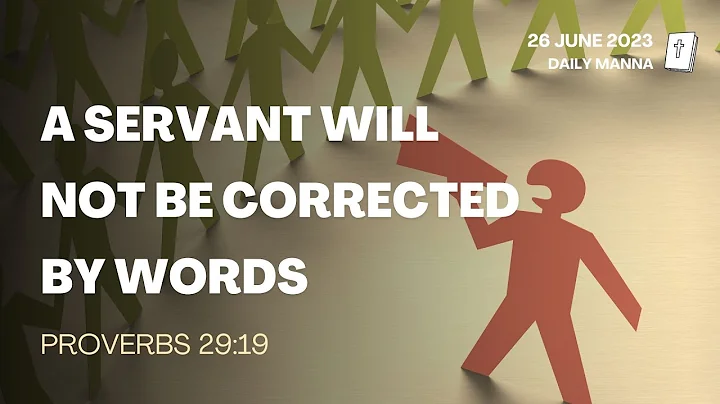Unveiling the Legacy: The History and Symbolism of Hae Hawaiʻi
Table of Contents
- Introduction
- The Creation of Hae Hawaiʻi
- The Symbolism of Hae Hawaiʻi
- The Standardization of Hae Hawaiʻi
- Hae Hawaiʻi as a Symbol of Resistance
- The Importance of Hae Hawaiʻi in Hawaiian History
- The Love for Hae Hawaiʻi
- The Color Printed Hae Hawaiʻi
- The Significance of Hae Hawaiʻi Today
- Conclusion
The History and Significance of Hae Hawaiʻi 🌺
Introduction
Hae Hawaiʻi, also known as the Hawaiian flag, holds immense cultural and historical significance for the people of Hawaiʻi. It is a symbol that represents the sovereignty, unity, and progress of the Hawaiian nation. The story of Hae Hawaiʻi begins with its creation at the request of the great Hawaiian leader, Kamehameha I. This article delves into the fascinating history and symbolism of Hae Hawaiʻi, shedding light on its evolution and its role in Hawaiian history.
The Creation of Hae Hawaiʻi
Hae Hawaiʻi was created in response to Kamehameha I's encounters with foreign powers visiting Hawaiʻi. As a skilled diplomat and visionary, Kamehameha recognized the importance of having a symbol that could represent his kingdom, just as foreign ships had their own flags. In 1794, Captain Vancouver, a prominent British explorer, gifted Kamehameha a special flag called the red ensign. This flag, with the Union Jack in the upper corner and a red field, became a cherished possession for Kamehameha, symbolizing a special relationship with Great Britain.
The Symbolism of Hae Hawaiʻi
Hae Hawaiʻi served as a unifying symbol for the Hawaiian people, representing their aloha ʻāina (love for their land) and their commitment to progress, peace, and unity. The flag originally had seven stripes, alternating in red, white, and blue, symbolizing the islands of Hawaiʻi. Over time, the number of stripes varied, with some accounts mentioning eight or nine stripes. However, by about 1845, the flag was standardized to have eight stripes, representing the major islands of Hawaiʻi.
The Standardization of Hae Hawaiʻi
The standardization of Hae Hawaiʻi in the mid-1800s solidified its role as the official flag of the Hawaiian Kingdom. This flag, measuring eight by sixteen units, became the representation of Hawaiʻi whenever Hawaiian leaders traveled abroad. Additionally, the Hawaiian monarchs had their own personal flags called Hae Kalaunu, which featured a crown symbolizing their royal status. Hae Hawaiʻi and Hae Kalaunu were flown together to represent the presence of the Hawaiian monarch.
Hae Hawaiʻi as a Symbol of Resistance
During the tumultuous period of Hawaiʻi's history, Hae Hawaiʻi served as a symbol of resistance against foreign encroachment and the overthrow of the Hawaiian Kingdom. When Liliʻuokalani, the last reigning monarch, was dethroned in 1893, the Hawaiian people flew Hae Hawaiʻi as a form of protest and as a reminder of their sovereignty. The flag became a powerful symbol for the Hui Aloha ʻĀina, an organization that gathered petitions to prevent the annexation of Hawaiʻi. Their efforts were successful, with over 90% of the Hawaiian population signing the petitions.
The Importance of Hae Hawaiʻi in Hawaiian History
Hae Hawaiʻi holds immense importance in Hawaiian history as a symbol of the past, present, and future. It represents the struggles and triumphs of the Hawaiian people and their unwavering love for their land. From the time of Kamehameha I to the present day, Hae Hawaiʻi has been a powerful reminder of the unique cultural identity of the Hawaiian nation.
The Love for Hae Hawaiʻi
The Hawaiian people have a deep affection for Hae Hawaiʻi, which is evident in their celebrations and expressions of pride. The flag is flown proudly on the Mauna, in backyards, and on vehicles throughout the islands. The love for Hae Hawaiʻi is captured in the words of the Nupepa Kekoʻo Hawaiʻi: "Ka Hae Nani o Hawaiʻi, E Mau Kona Welo Ana" (The beautiful flag of Hawaiʻi will continue to shine). It serves as a constant reminder of the unique spirit of aloha and aloha ʻāina, which are the superpowers of the Hawaiian people.
The Color Printed Hae Hawaiʻi
A significant milestone in the history of Hae Hawaiʻi was the color printing of the flag in 1862. This was a remarkable achievement, as it was one of the world's first color printed newspapers, and Hae Hawaiʻi was the first image to be color printed. The color printed flag symbolized the deep love and admiration that the Hawaiian people had for their national flag.
The Significance of Hae Hawaiʻi Today
Today, Hae Hawaiʻi continues to be a symbol of pride, unity, and cultural identity for the Hawaiian people. It serves as a reminder of the rich history and traditions of the Hawaiian nation. The flag is seen prominently on official buildings, at cultural events, and in personal expression of pride in Hawaiian heritage. Hae Hawaiʻi stands as a testament to the resilience and strength of the Hawaiian people, carrying forward their legacy for future generations.
Conclusion
Hae Hawaiʻi, the Hawaiian flag, is more than just a piece of cloth. It represents the values, history, and spirit of the Hawaiian people. From its creation during Kamehameha I's reign to its significance in the present day, Hae Hawaiʻi stands as a powerful symbol of unity, love for the land, and resistance in the face of adversity. As the flag continues to wave, it serves as a reminder of the enduring legacy of the Hawaiian people and their unwavering commitment to their cultural heritage and the prosperity of the Hawaiian nation.
Highlights
- The creation of Hae Hawaiʻi occurred at the request of Kamehameha I, representing his diplomatic and strategic thinking.
- Hae Hawaiʻi symbolizes the sovereignty, unity, and progress of the Hawaiian nation.
- The flag was standardized to have eight stripes, representing the major islands of Hawaiʻi.
- Hae Hawaiʻi has served as a symbol of resistance against foreign encroachment and the overthrow of the Hawaiian Kingdom.
- The love for Hae Hawaiʻi is deeply rooted in the Hawaiian people, and it is celebrated and cherished throughout the islands.
- The color printed Hae Hawaiʻi was one of the world's first color printed images, symbolizing the deep admiration for the flag.
- Hae Hawaiʻi continues to be a powerful symbol of cultural identity, pride, and unity for the Hawaiian people today.
FAQ
Q: When was Hae Hawaiʻi created?
Hae Hawaiʻi was created in the late 18th century, specifically around 1794, at the request of Kamehameha I.
Q: What does Hae Hawaiʻi symbolize?
Hae Hawaiʻi symbolizes the sovereignty, unity, and progress of the Hawaiian nation. It represents the love for the land and the unique cultural identity of the Hawaiian people.
Q: How many stripes does Hae Hawaiʻi have?
The number of stripes on Hae Hawaiʻi has varied over time. It was standardized to have eight stripes, representing the major islands of Hawaiʻi, in about 1845.
Q: Why is Hae Hawaiʻi significant in Hawaiian history?
Hae Hawaiʻi is significant in Hawaiian history as a symbol of resistance against foreign encroachment and the overthrow of the Hawaiian Kingdom. It represents the struggles and triumphs of the Hawaiian people and their unwavering love for their land.
Q: How is Hae Hawaiʻi celebrated today?
Hae Hawaiʻi is celebrated today by being flown proudly on official buildings, at cultural events, and in personal expressions of pride in Hawaiian heritage. It serves as a reminder of the rich history and traditions of the Hawaiian nation.







